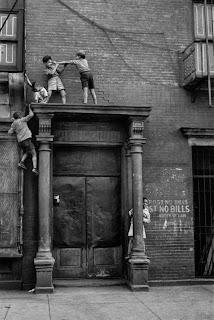August Sander |
| Portraits from August Sander's Citizens of the Twentieth Century (1929-30) |
In 1929, German photographer August Sander announced his plan to create a photographic manual that would become a social inventory of Germany in the form of portfolios. Although this project was incomplete, August Sanders succeeded in creating an awareness to what he called "exact photography". He presented his photographs as technical products instead of art pieces. His portrait subjects were usually aware of the camera and assumed representative poses.
The three portraits above show seemingly ordinary men. However, only after closer observation can we see Sander's genius touch on these photographs. The first two photographs are portraits of tramps, people who came from the lowest layer of society. The third photograph is a portrait of a head farmer, someone who is considerably in a much better social standing than the other three men.
The third photograph has a similar composition to the first photograph creating the illusion that the two men came from the same social group. But Sanders wanted the viewer to focus on the person portrayed, not his surroundings. The head farmer assumed a stern pose showing leadership. His shiny shoes and tailored coat told us that his social status. In the other hand, the tramp seemed more at ease. He had one hand in his pocket and the other held a walking stick. He looked away from the camera and his face expressed a sense of longing. His worn shoes completed the image of a vagrant. Some of these could also be seen in the second photograph despite it having a different composition.
These subtle hints are what makes Sander's portrait so special. He stepped away from making portraits looked like paintings, something that was still considered the norm at his time. Instead he presented his subjects as people, real and breathing.
Phil Wira
These subtle hints are what makes Sander's portrait so special. He stepped away from making portraits looked like paintings, something that was still considered the norm at his time. Instead he presented his subjects as people, real and breathing.
Phil Wira










